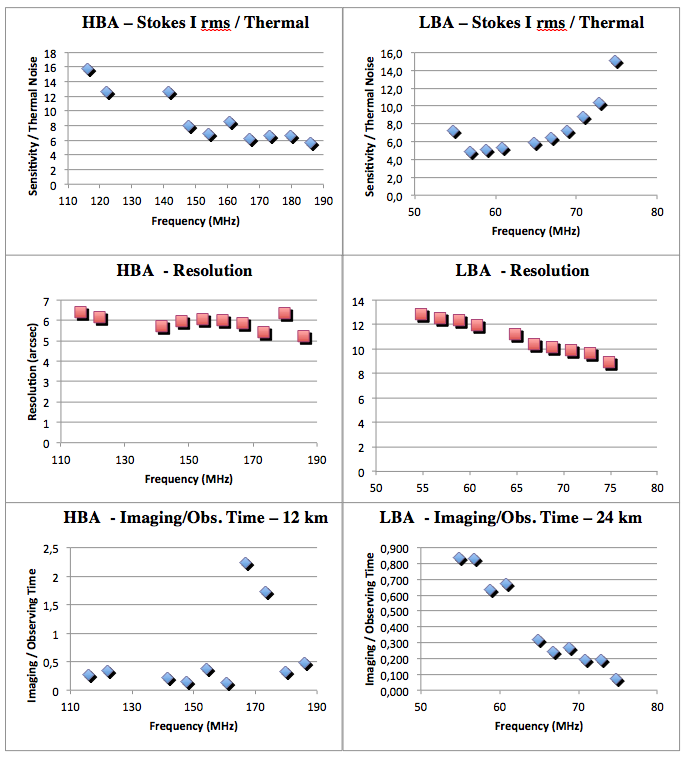Daily Image
10-09-2012Current status and imaging performance of LOFAR
| Submitter: | Roberto Pizzo, George Heald, Wojciech Jurusik, Emanuela Orru', Vibor Jelic, Alexander van der Horst |
| Description: | In view of the forthcoming Cycle 0 call for proposals, the Radio Observatory assessed the current imaging status and performance of LOFAR. Observations of the MSSS field L227+69 were performed in HBA and LBA and were reduced using the Standard Imaging Pipeline tools.To explore any possible dependence by observing frequency, the data were analysed in datasets covering a bandwidth of 2 MHz, all separated by 2 MHz from each other. For the HBA, the final bands were distributed between 115 and 185 MHz, for the LBA between 54 and 75 MHz. The imaging was performed with AWimager. The full FOV was imaged using various physical baseline selections (specifically 3, 6, 12, 24, 48, and 79 km), uniform weighting, and 2500 cleaning cycles in the deconvolution step. In these plots, the first two rows show the noise and resolution as a function of frequency for the imaging runs involving the full array. To avoid the use of swap memory on the CEP2 nodes, the imaging of the full FOV could be performed only for a maximum baseline of 12 km in HBA and 24 km in LBA. The imaging vs. observing time performance for these datasets is shown in the third row of the plots. The achieved noises are only a few factors above the thermal noise. Currently, these results are limited by off-axis errors induced by the ionosphere. Direction-dependent calibration, which soon will be implemented in the Standard Imaging Pipeline, will enormously improve the quality of the final images allowing to achieve thermal noise limited maps. The full characterization results are available on the LOFAR pages of the ASTRON website. |
| Copyright: | Roberto Pizzo |
| Tweet |  |
